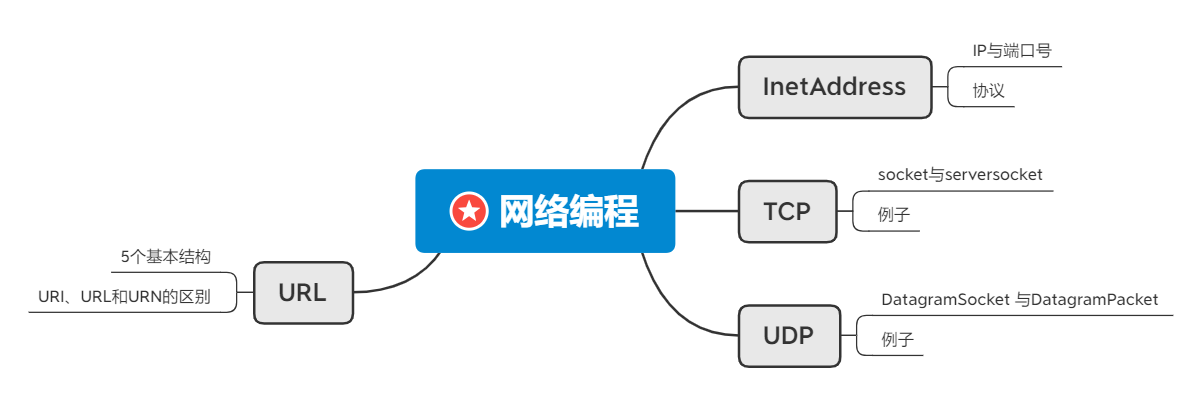
域名解析:域名容易记忆,当在连接网络时输入一个主机的域名后,域名服务器(DNS)负责将域名转化成IP地址,这样才能和主机建立连接。 -------域名解析
端口号与IP地址的组合得出一个网络套接字:Socket。
Internet上的主机有两种方式表示地址:
InetAddress类主要表示IP地址,两个子类:Inet4Address、Inet6Address。
InetAddress 类 对 象 含 有 一 个 Internet 主 机 地 址 的 域 名 和 IP 地 址 : www.atguigu.com 和 202.108.35.210。
实例化
netAddress类没有提供公共的构造器,而是提供了如下几个静态方法来获取 InetAddress实例
getByName(String host) 、 getLocalHost()
public static InetAddress getLocalHost()
public static InetAddress getByName(String host)
常用方法
getHostName() / getHostAddress()
public String getHostAddress():返回 IP 地址字符串(以文本表现形式)。
public String getHostName():获取此 IP 地址的主机名
例子
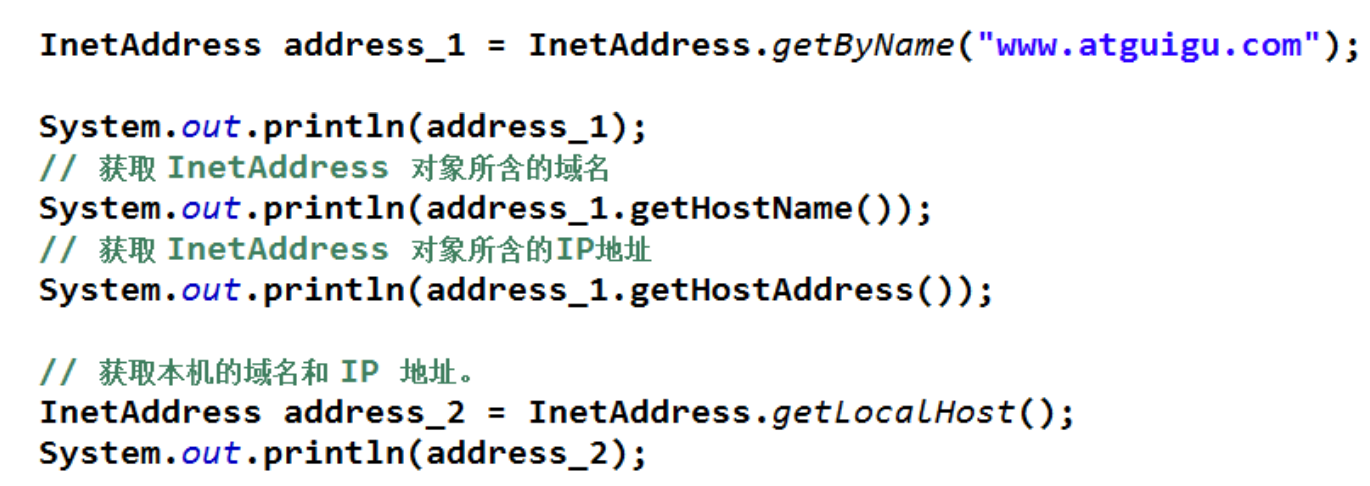
正在计算机上运行的进程
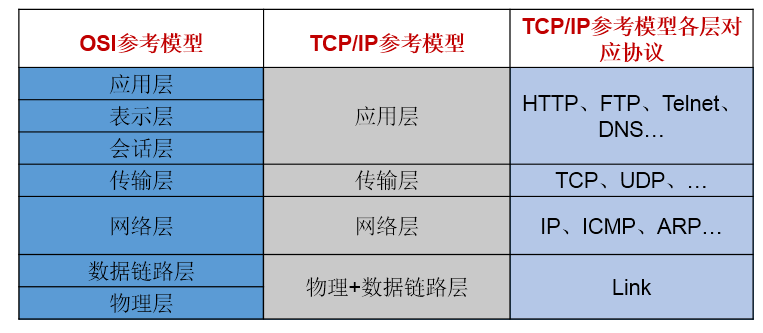
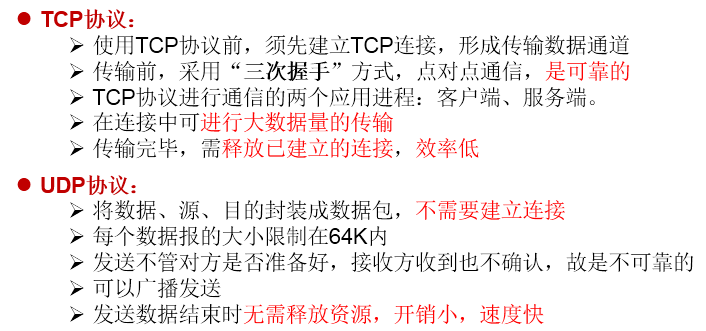
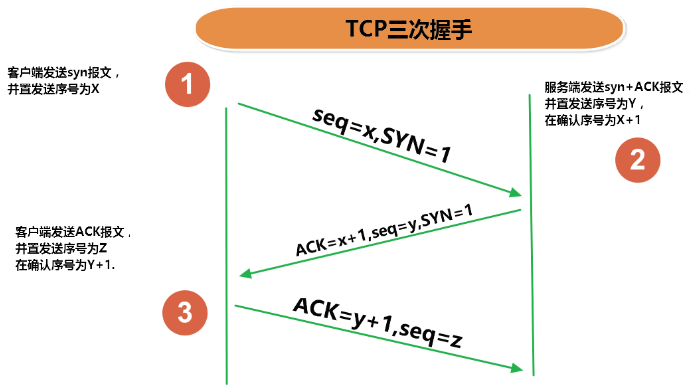
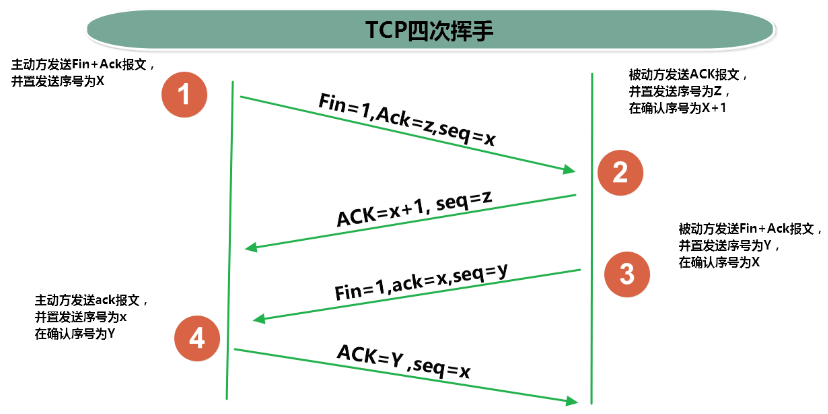
Socket分类
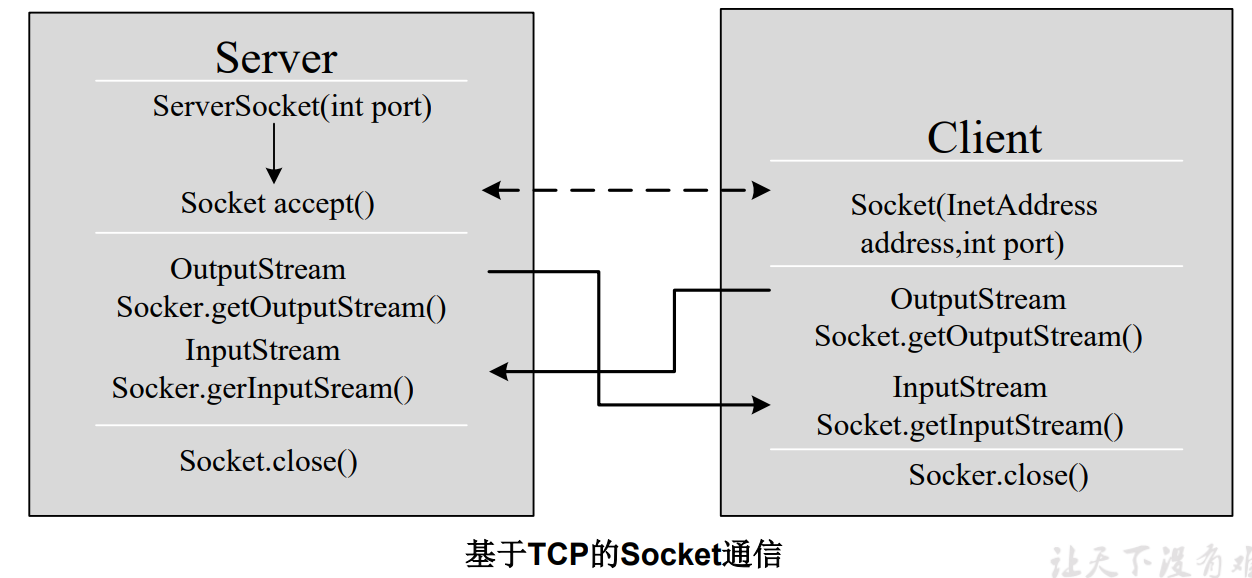
客户端Socket的工作过程包含以下四个基本的步骤:
服务器程序的工作过程包含以下四个基本的步骤
客户端发送信息给服务端,服务端将数据显示在控制台上
//客户端
@Test
public void client() {
Socket socket = null;
OutputStream os = null;
try {
//1.创建Socket对象,指明服务器端的ip和端口号
InetAddress inet = InetAddress.getByName("192.168.14.100");
socket = new Socket(inet,8899);
//2.获取一个输出流,用于输出数据
os = socket.getOutputStream();
//3.写出数据的操作
os.write("你好,我是客户端mm".getBytes());
} catch (IOException e) {
e.printStackTrace();
} finally {
//4.资源的关闭
if(os != null){
try {
os.close();
} catch (IOException e) {
e.printStackTrace();
}
}
if(socket != null){
try {
socket.close();
} catch (IOException e) {
e.printStackTrace();
}
}
}
}
//服务端
@Test
public void server() {
ServerSocket ss = null;
Socket socket = null;
InputStream is = null;
ByteArrayOutputStream baos = null;
try {
//1.创建服务器端的ServerSocket,指明自己的端口号
ss = new ServerSocket(8899);
//2.调用accept()表示接收来自于客户端的socket
socket = ss.accept();
//3.获取输入流
is = socket.getInputStream();
//不建议这样写,可能会乱码
// byte[] buffer = new byte[1024];
// int len;
// while((len = is.read(buffer)) != -1){
// String str = new String(buffer,0,len);
// System.out.print(str);
// }
//4.读取输入流中的数据
baos = new ByteArrayOutputStream();
byte[] buffer = new byte[5];
int len;
while((len = is.read(buffer)) != -1){
baos.write(buffer,0,len);
}
System.out.println(baos.toString());
System.out.println("收到了来自于:" + socket.getInetAddress().getHostAddress() + "的数据");
} catch (IOException e) {
e.printStackTrace();
} finally {
if(baos != null){
//5.关闭资源
try {
baos.close();
} catch (IOException e) {
e.printStackTrace();
}
}
if(is != null){
try {
is.close();
} catch (IOException e) {
e.printStackTrace();
}
}
if(socket != null){
try {
socket.close();
} catch (IOException e) {
e.printStackTrace();
}
}
if(ss != null){
try {
ss.close();
} catch (IOException e) {
e.printStackTrace();
}
}
}
}
客户端发送文件给服务端,服务端将文件保存在本地
@Test
public void client() throws IOException {
//1.
Socket socket = new Socket(InetAddress.getByName("127.0.0.1"),9090);
//2.
OutputStream os = socket.getOutputStream();
//3.
FileInputStream fis = new FileInputStream(new File("beauty.jpg"));
//4.
byte[] buffer = new byte[1024];
int len;
while((len = fis.read(buffer)) != -1){
os.write(buffer,0,len);
}
//5.
fis.close();
os.close();
socket.close();
}
@Test
public void server() throws IOException {
//1.
ServerSocket ss = new ServerSocket(9090);
//2.
Socket socket = ss.accept();
//3.
InputStream is = socket.getInputStream();
//4.
FileOutputStream fos = new FileOutputStream(new File("beauty1.jpg"));
//5.
byte[] buffer = new byte[1024];
int len;
while((len = is.read(buffer)) != -1){
fos.write(buffer,0,len);
}
//6.
fos.close();
is.close();
socket.close();
ss.close();
}
@Test
public void client() throws IOException {
//1.
Socket socket = new Socket(InetAddress.getByName("127.0.0.1"),9090);
//2.
OutputStream os = socket.getOutputStream();
//3.
FileInputStream fis = new FileInputStream(new File("beauty.jpg"));
//4.
byte[] buffer = new byte[1024];
int len;
while((len = fis.read(buffer)) != -1){
os.write(buffer,0,len);
}
//关闭数据的输出
socket.shutdownOutput();
//5.接收来自于服务器端的数据,并显示到控制台上
InputStream is = socket.getInputStream();
ByteArrayOutputStream baos = new ByteArrayOutputStream();
byte[] bufferr = new byte[20];
int len1;
while((len1 = is.read(buffer)) != -1){
baos.write(buffer,0,len1);
}
System.out.println(baos.toString());
//6.
fis.close();
os.close();
socket.close();
baos.close();
}
@Test
public void server() throws IOException {
//1.
ServerSocket ss = new ServerSocket(9090);
//2.
Socket socket = ss.accept();
//3.
InputStream is = socket.getInputStream();
//4.
FileOutputStream fos = new FileOutputStream(new File("beauty2.jpg"));
//5.
byte[] buffer = new byte[1024];
int len;
while((len = is.read(buffer)) != -1){
fos.write(buffer,0,len);
}
System.out.println("图片传输完成");
//6.服务器端给予客户端反馈
OutputStream os = socket.getOutputStream();
os.write("你好,美女,照片我已收到,非常漂亮!".getBytes());
//7.
fos.close();
is.close();
socket.close();
ss.close();
os.close();
}
左服务端、右客户端
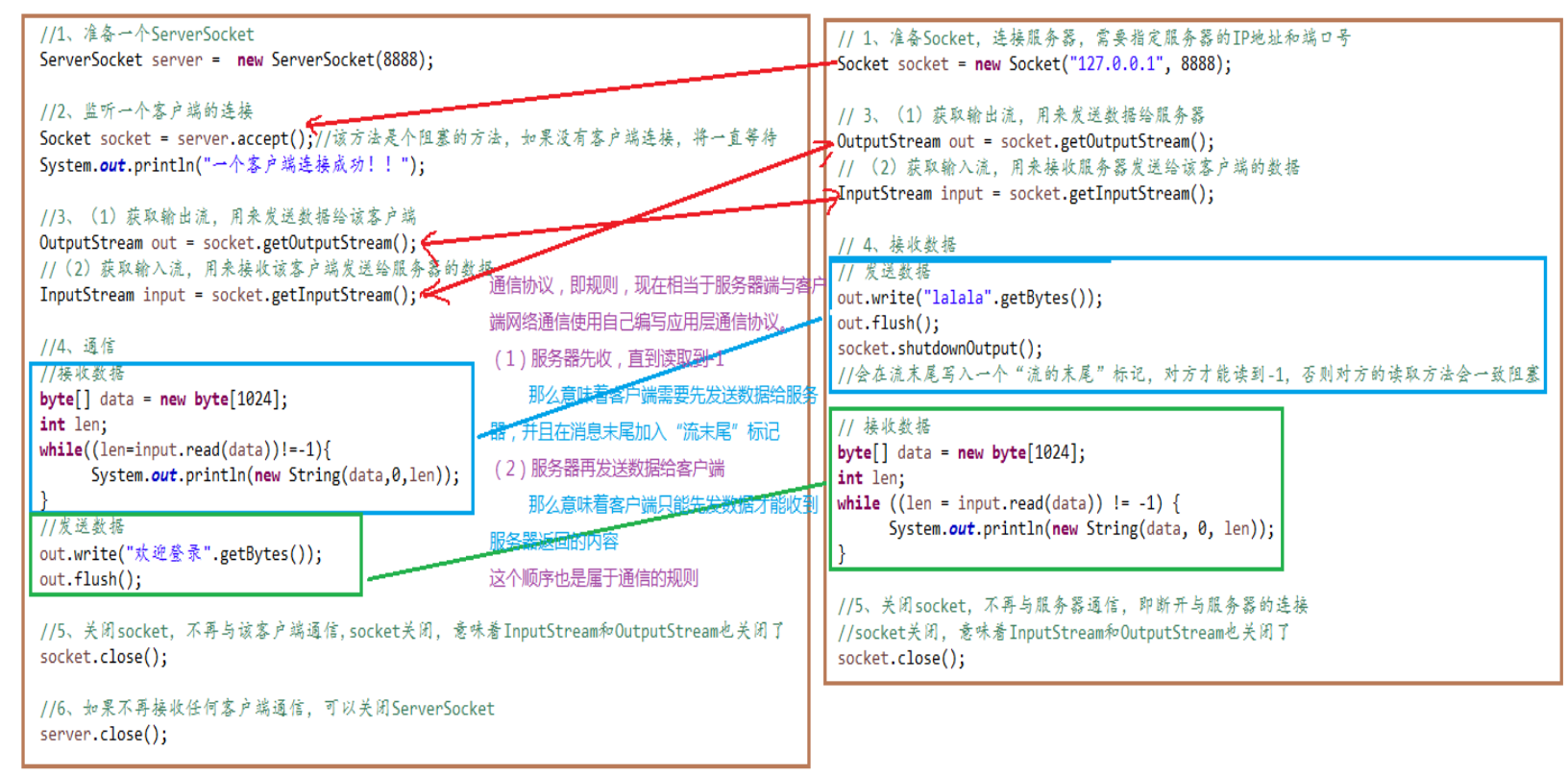
客户端
服务端
类 DatagramSocket 和 DatagramPacket 实现了基于 UDP 协议网络程序。
UDP数据报通过数据报套接字 DatagramSocket 发送和接收,系统不保证 UDP数据报一定能够安全送到目的地,也不能确定什么时候可以抵达
DatagramPacket 对象封装了UDP数据报,在数据报中包含了发送端的IP 地址和端口号以及接收端的IP地址和端口号
UDP协议中每个数据报都给出了完整的地址信息,因此无须建立发送方和接收方的连接。如同发快递包裹一样。
发送端与接收端是两个独立的运行程序
发送端
DatagramSocket ds = null;
try {
ds = new DatagramSocket();
byte[] by = "hello,atguigu.com".getBytes();
DatagramPacket dp = new DatagramPacket(by, 0, by.length, InetAddress.getByName("127.0.0.1"), 10000);
ds.send(dp);
} catch (Exception e) {
e.printStackTrace();
} finally {
if (ds != null)
ds.close();
}
接收端
DatagramSocket ds = null;
try {
ds = new DatagramSocket(10000);
byte[] by = new byte[1024];
DatagramPacket dp = new DatagramPacket(by, by.length);
ds.receive(dp);
String str = new String(dp.getData(), 0, dp.getLength());
System.out.println(str + "--" + dp.getAddress());
} catch (Exception e) {
e.printStackTrace();
} finally {
if (ds != null)
ds.close();
}
//发送端
@Test
public void sender() throws IOException {
DatagramSocket socket = new DatagramSocket();
String str = "我是UDP方式发送的导弹";
byte[] data = str.getBytes();
InetAddress inet = InetAddress.getLocalHost();
DatagramPacket packet = new DatagramPacket(data,0,data.length,inet,9090);
socket.send(packet);
socket.close();
}
//接收端
@Test
public void receiver() throws IOException {
DatagramSocket socket = new DatagramSocket(9090);
byte[] buffer = new byte[100];
DatagramPacket packet = new DatagramPacket(buffer,0,buffer.length);
socket.receive(packet);
System.out.println(new String(packet.getData(),0,packet.getLength()));
socket.close();
}
URL(Uniform Resource Locator):统一资源定位符,它表示 Internet 上某一 资源的地址。
http://localhost:8080/examples/beauty.jpg?username=Tom
协议 主机名 端口号 资源地址 参数列表
URL url = new URL("http://localhost:8080/examples/beauty.jpg?username=Tom");
一个URL对象生成后,其属性是不能被改变的,但可以通过它给定的 方法来获取这些属性:
public String getProtocol( ) 获取该URL的协议名
public String getHost( ) 获取该URL的主机名
public String getPort( ) 获取该URL的端口号
public String getPath( ) 获取该URL的文件路径
public String getFile( ) 获取该URL的文件名
public String getQuery( ) 获取该URL的查询名
URL url = new URL("http://localhost:8080/examples/myTest.txt");
System.out.println("getProtocol() :"+url.getProtocol());
System.out.println("getHost() :"+url.getHost());
System.out.println("getPort() :"+url.getPort());
System.out.println("getPath() :"+url.getPath());
System.out.println("getFile() :"+url.getFile());
System.out.println("getQuery() :"+url.getQuery());
//=============================
getProtocol() :http
getHost() :localhost
getPort() :8080
getPath() :/examples/myTest.txt
getFile() :/examples/myTest.txt
getQuery() :null
URLConnection:表示到URL所引用的远程对象的连接。当与一个URL建立连接时, 首先要在一个 URL 对象上通过方法 openConnection() 生成对应的 URLConnection 对象。如果连接过程失败,将产生IOException.
通过URLConnection对象获取的输入流和输出流,即可以与现有的CGI 程序进行交互。
public static void main(String[] args) {
HttpURLConnection urlConnection = null;
InputStream is = null;
FileOutputStream fos = null;
try {
URL url = new URL("http://localhost:8080/examples/beauty.jpg");
urlConnection = (HttpURLConnection) url.openConnection();
urlConnection.connect();
is = urlConnection.getInputStream();
fos = new FileOutputStream("day10\\beauty3.jpg");
byte[] buffer = new byte[1024];
int len;
while((len = is.read(buffer)) != -1){
fos.write(buffer,0,len);
}
System.out.println("下载完成");
} catch (IOException e) {
e.printStackTrace();
} finally {
//关闭资源
if(is != null){
try {
is.close();
} catch (IOException e) {
e.printStackTrace();
}
}
if(fos != null){
try {
fos.close();
} catch (IOException e) {
e.printStackTrace();
}
}
if(urlConnection != null){
urlConnection.disconnect();
}
}
}
URI,是uniform resource identifier,统一资源标识符,用来唯一的标识一个 资源。而URL是uniform resource locator,统一资源定位符,它是一种具体 的URI,即URL可以用来标识一个资源,而且还指明了如何locate这个资源。
而URN,uniform resource name,统一资源命名,是通过名字来标识资源, 比如mailto:java-net@java.sun.com。
也就是说,URI是以一种抽象的,高层 次概念定义统一资源标识,而URL和URN则是具体的资源标识的方式。URL 和URN都是一种URI。
原文:https://www.cnblogs.com/vccyb/p/13960789.html